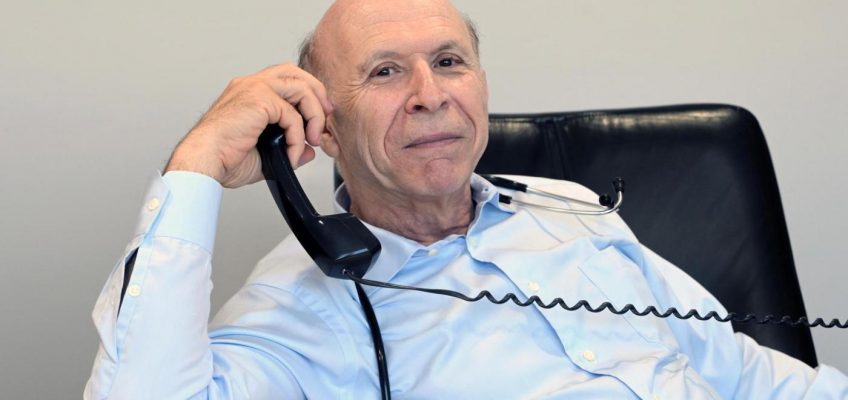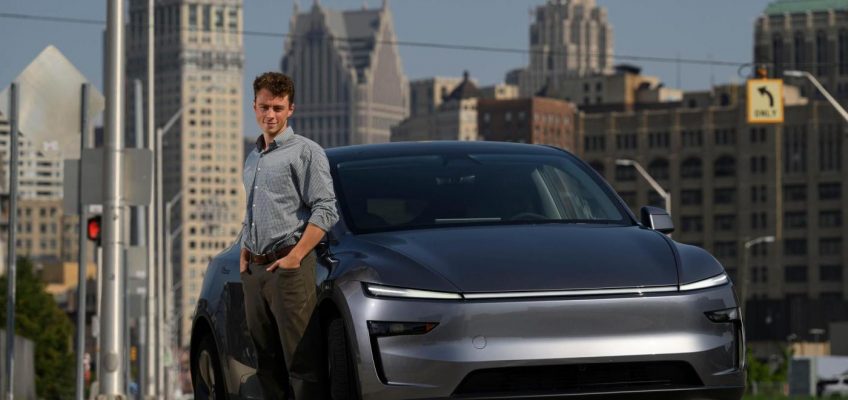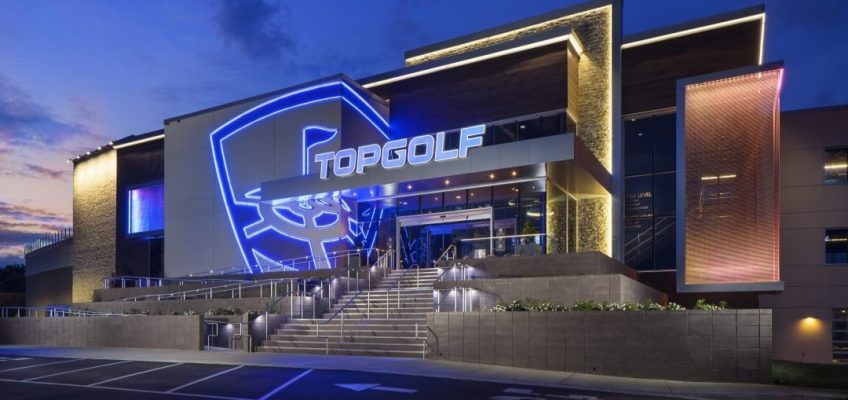By Christine Mai-Duc, KFF Health News
Jacob Sweidan has seen his patients through the federal immigration raids of the 1990s, a sitting governor’s call to abolish birthright citizenship, and the highly publicized workplace crackdowns and family separation policies of President Donald Trump’s first term.
Related Articles
Despite federal shift, state health officials encourage COVID vaccines for pregnant women
Breaking down why Medicare Part D premiums are likely to go up
Moving to a new home or school can stress kids out. How to make it more manageable
Hulk Hogan’s death may have been result of ‘severed’ nerve, medical malpractice
Federal investigators demanded details on transgender patients from at least 1 hospital
But in his 40 years as a pediatrician in Southern California serving those too poor to afford care, including many immigrant families, Sweidan said he’s never seen a drop-off in patient visits like this.
“They are scared to come to the offices. They’re getting sicker and sicker,” said Sweidan, who specializes in neonatology and runs five clinics in Los Angeles and Orange counties. “And when they are near collapsing, they go to the ER because they have no choice.”
In the last two months, he has sent young children to the emergency room because their parents worked up the courage to call his office only after several days of high fever. He said he attended to a 14-year-old boy in the ER who was on the verge of a diabetic coma because he’d run out of insulin, his parents too frightened to venture out for a refill.
Sweidan had stopped offering telehealth visits after the COVID-19 pandemic, but he and other health care providers have brought them back as ramped-up immigration enforcement drives patients without legal status — and even their U.S. citizen children — deeper into the shadows.
Patients in need of care are increasingly scared to seek it after Trump rescinded a Biden-era policy that barred immigration officials from conducting operations in “sensitive” areas such as schools, hospitals, and churches. Clinics and health plans have taken a page out of their COVID playbooks, revamping tested strategies to care for patients scared to leave the house.
Sara Rosenbaum, professor emerita of health law and policy at George Washington University, said she’s heard from clinic administrators and industry colleagues who have experienced a substantial drop in in-person visits among immigrant patients.
“I don’t think there’s a community health center in the country that is not feeling this,” Rosenbaum said.
At St. John’s Community Health clinics in the Los Angeles area, which serve an estimated 30,000 patients without legal status annually, virtual visits have skyrocketed from roughly 8% of appointments to about 25%, said Jim Mangia, president and chief executive officer. The organization is also registering some patients for in-home health visits, a service funded by private donors, and has trained employees how to read a warrant.
“People are not picking up their medicine,” Mangia said. “They’re not seeing the doctor.”
Mangia said that, in the past eight weeks, federal agents have attempted to gain access to patients at a St. John’s mobile clinic in Downey and pointed a gun at an employee during a raid at MacArthur Park. Last month, Immigration and Customs Enforcement contractors sat in a Southern California hospital waiting for a patient and federal prosecutors charged two health center workers they say interfered with immigration officers’ attempts to arrest someone at an Ontario facility.
C.S., an immigrant from Huntington Park without legal status, said she signed up for St. John’s home visit services in July because she fears going outside. The 71-year-old woman, who asked to be identified only by her initials for fear of deportation, said she has missed blood work and other lab tests this year. Too afraid to take the bus, she skipped a recent appointment with a specialist for her arthritic hands. She is also prediabetic and struggles with leg pain after a car hit her a few years ago.
“I feel so worried because if I don’t get the care I need, it can get much worse,” she said in Spanish, speaking about her health issues through an interpreter. A doctor at the clinic gave her a number to call in case she wants to schedule an appointment by phone.
Officials at the federal Department of Health and Human Services did not respond to questions from KFF Health News seeking comment about the impact of the raids on patients.
There’s no indication the Trump administration intends to shift its strategy. Federal officials have sought to pause a judge’s order temporarily restricting how they conduct raids in Southern California after immigrant advocates filed a lawsuit accusing ICE of deploying unconstitutional tactics. The 9th U.S. Circuit Court of Appeals on Aug. 1 denied the request, leaving the restraining order in place.
In July, Los Angeles County supervisors directed county agencies to explore expanding virtual appointment options after the county’s director of health services noted a “huge increase” in phone and video visits. Meanwhile, state lawmakers in California are considering legislation that would restrict immigration agents’ access to places such as schools and health care facilities — Colorado’s governor, Democrat Jared Polis, signed a similar bill into law in May.
Immigrants and their families will likely end up using more costly care in emergency rooms as a last resort. And recently passed cuts to Medicaid are expected to further stress ERs and hospitals, said Nicole Lamoureux, president of the National Association of Free & Charitable Clinics.
“Not only are clinics trying to reach people who are retreating from care before they end up with more severe conditions, but the health care safety net is going to be strained due to an influx in patient demand,” Lamoureux said.
Mitesh Popat, CEO of Venice Family Clinic, nearly 90% of whose patients are at or below the federal poverty line, said staff call patients before appointments to ask if they plan to come in person and to offer telehealth as an option if they are nervous. They also call if a patient doesn’t show five minutes into their appointment and offer immediate telehealth service as an alternative. The clinic has seen a roughly 5% rise in telehealth visits over the past month, Popat said.
In the Salinas Valley, an area with a large concentration of Spanish-speaking farmworkers, Clinica de Salud del Valle de Salinas began promoting telehealth services with Spanish radio ads in January. The clinics also trained people how to use Zoom and other digital platforms at health fairs and community meetings.
CalOptima Health, which covers nearly 1 in 3 residents of Orange County and is the biggest Medi-Cal benefits administrator in the area, sent more than a quarter-million text messages to patients in July encouraging them to use telehealth rather than forgo care, said Chief Executive Officer Michael Hunn. The insurer has also set up a webpage of resources for patients seeking care by phone or home delivery of medication.
“The Latino community is facing a fear pandemic. They’re quarantining just the way we all had to during the COVID-19 pandemic,” said Seciah Aquino, executive director of the Latino Coalition for a Healthy California, an advocacy group that promotes health access for immigrants and Latinos.
But substituting telehealth isn’t a long-term solution, said Isabel Becerra, chief executive officer of the Coalition of Orange County Community Health Centers, whose members reported increases in telehealth visits as high as 40% in the past month.
“As a stopgap, it’s very effective,” said Becerra, whose group represents 20 clinics in Southern California. “Telehealth can only take you so far. What about when you need lab work? You can’t look at a cavity through a screen.”
Telehealth also brings a host of other challenges, including technical hiccups with translation services and limited computer proficiency or internet access among patients, she said.
And it’s not just immigrants living in the country unlawfully who are scared to seek out care. In southeast Los Angeles County, V.M., a 59-year-old naturalized citizen, relies on her roommate to pick up her groceries and prescriptions. She asked that only her initials be used to share her story and those of her family and friends out of fear they could be targeted.
When she does venture out — to church or for her monthly appointment at a rheumatology clinic — she carries her passport and looks askance at any cars with tinted windows.
“I feel paranoid,” said V.M., who came to the U.S. more than 40 years ago and is a patient of Venice Family Clinic. “Sometimes I feel scared. Sometimes I feel angry. Sometimes I feel sad.”
She now sees her therapist virtually for her depression, which began 10 years ago when rheumatoid arthritis forced her to stop working. She worries about her older brother, who has high blood pressure and has stopped going to the doctor, and about a friend from the rheumatology clinic, who ices swollen hands and feet because she’s missed four months of appointments in a row.
“Somebody has to wake up or people are going to start falling apart outside on the streets and they’re going to die,” she said.
This article was produced by KFF Health News , which publishes California Healthline , an editorially independent service of the California Health Care Foundation .
©2025 KFF Health News. Distributed by Tribune Content Agency, LLC.




